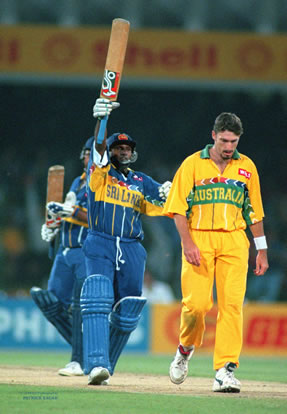by Kobe Jacobs, ACS Literary Scholar
Three consecutive tests filled with captivating cricket were ultimately fizzled out in the final and fourth Test match in Ahmedabad.
In a fascinating series that featured batting collapses, tricky wickets and mesmerising spin bowling, the final Ahmedabad Test finished in a more than tame manner.
With the match ending in a draw and the players shaking hands in the final session, India ended the series with a 2-1 victory over the Australians, meaning the Border-Gavaskar Trophy remains with the home side.
Though ultimately finishing in a stalemate, the two countries will face one another later this year in June for the World Test Championship in England, thereby continuing the strong rivalry between two gallant cricketing nations.
India is known to be a hard team to beat at home, nothing changed in that regard throughout this series.
To put things in perspective, the last time Australia won a Test series in India, John Howard was the Prime Minister of the country.
And if you look back at all of the Australian teams to tour in the Indian sub-continent throughout this period, the question was whether that run would ever end.
The current Australian Test squad has been in incredible form and has been difficult to defeat of late.
And like their predecessors of the past, the team has always been thereabouts within the top three of the ICC Test rankings.
The Australians didn’t go down without a fight however, with Cameron Green and Usman Khawaja leading the way in the first innings.
His gritty knock of 180 off 422 balls only cemented his position as the most in-form Australian batsman.
Both he and Green were sublime throughout their innings, especially Green who confronted the challenge of attacking the short ball with sheer confidence.
His maiden test hundred was of a hardened style which was compounded with heavy hitting, having had a strike rate of 67.06.
And having only managed one score of over 250 throughout this series, the Australians found themselves in an unfamiliar position during this match.
Because of Khawaja and Green, the side put up a more than admirable score of 480 through almost two full days of cricket.
With a win being so vital for the Australian playing group, destiny seemed to be on the cusp.
However, India followed suit in manufacturing a large total and ultimately denied Australia hopes for glory.
Virat Kohli’s hundred was an innings of pure class which consisted of magnificent stroke play and plenty of patience.
A batsman cricket fans are accustomed to classifying as one of the worlds best didn’t miss out on making a large score, having just been short of a double century.
His 186 runs along with Shubman Gill’s knock of 128 nearly all but ruled out an Australian win.
Instead, India was now in the box seat to win the Test match.
After almost six full sessions of cricket, India had simply done enough to get the better end of a drawn result.
They slowly deteriorated all of Australia’s optimism of winning and forced the visitors to grind out a gritty draw on the fifth and final day.
Like the last test, Travis Head and Marnus Labuschagne were the pair responsible to see out the home side’s attempt to penetrate the Australian top order.
Producing scores of 90 (from Head) and 63 not out (from Labuschagne), the intensity of the contest gradually spiralled away to the point where Cheteshwar Pujara was brought on to bowl and see off the final minutes of the series.
As it turned out, the Ahmedabad pitch proved to be lifeless and ultimately contributed to the draw, leaving India satisfied and Australia hungry for more.
All eyes will now slowly turn to the rematch later this year at the Oval, where both countries have had recent success in the longer format in English conditions.
Australian Cricket Society’s literary scholar Kobe Jacobs is mentored by writer John Harms. His pieces are also published at www.footyalmanac.com.au .



